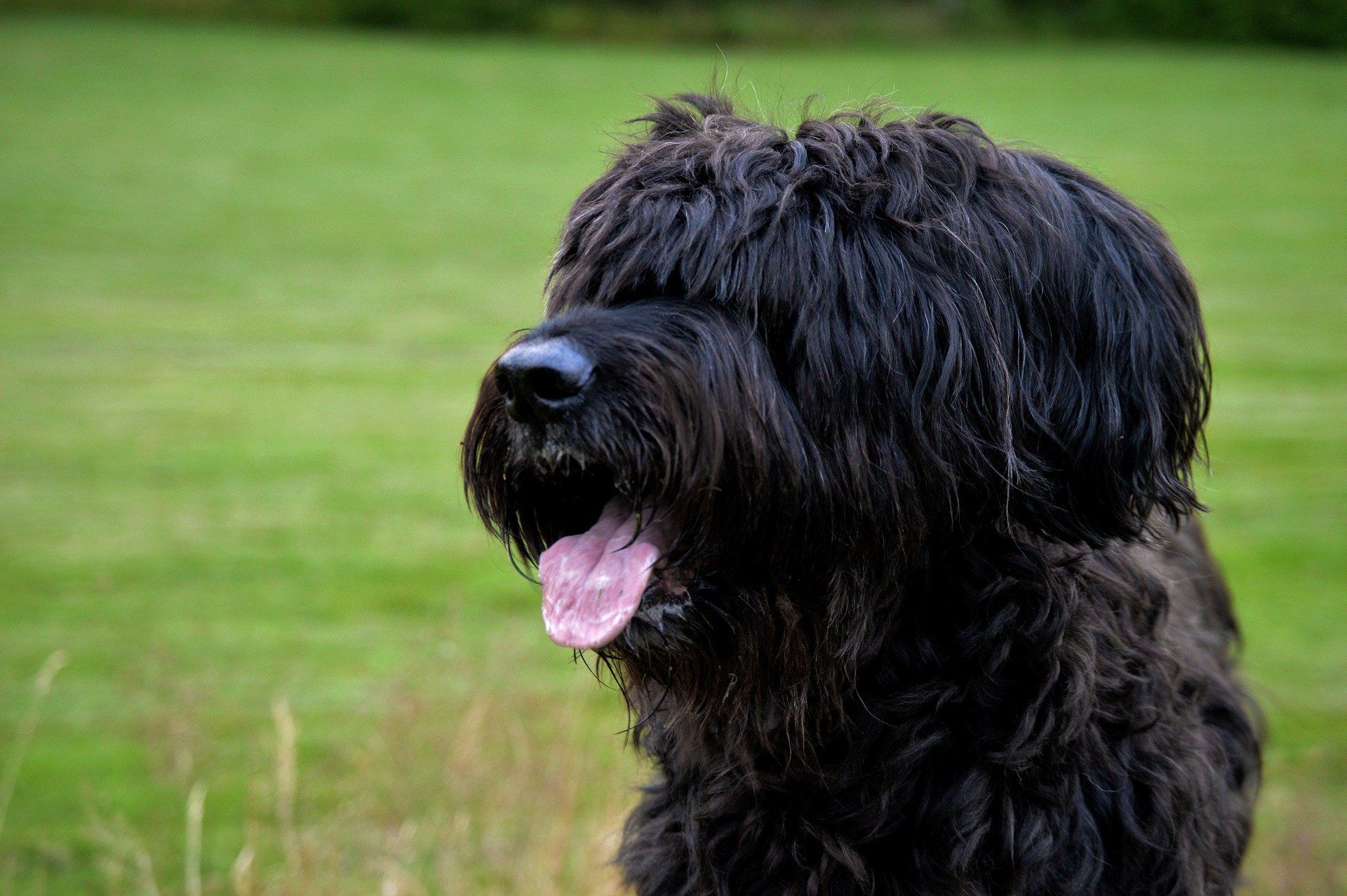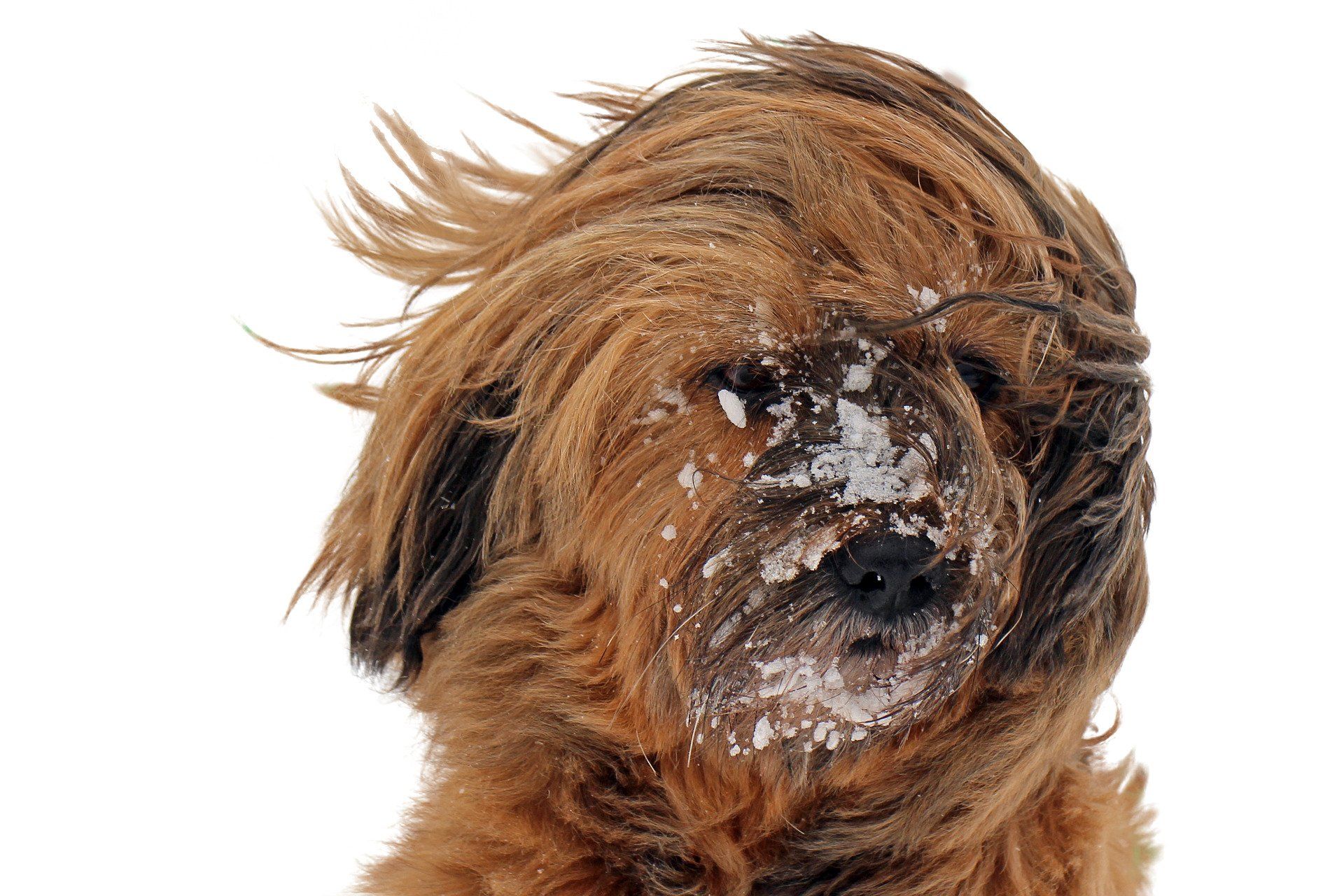Why do some Briards Look Different?

Table of Contents
Features of a purebred Briard
Briards are known well for their lengthy fur which may reach a height of 6 to 12 inches at the shoulders. They also have a hook-shaped tail which is called a crochet tail.
The size of female briards ranges from 22 - 25.5 inches while males 23 - 27 inches. They also have distinctive eyebrows and beards.
Their rear limbs each carry double dewclaws(thumb-like toes). Those are some of the features that distinguish this breed from other dog breeds but to have a better understanding of this dog breed we can look at their overall features all through the whole body.
Head
Their heads proportion is described at best lengthy. When measured from the occiput(back of the head) to the tip of the nose they approximate about 40% of their height above their shoulder points(referred to as withers). The occiput is prominent when touched.
When viewed from above, their heads give two rectangular impressions, one around the skull and the other around the muzzle area. This is used to describe the head as rectilinear with parallel planes in shape. The head joins with the neck at right angles and is held well enough with no restraints.
Its eyes are well apart and appear to be on the same level. The AKC also adds that they are supposed to be black or black-brown. It also specifies that the rims of the eyes have dark pigmentation.
The ears on the other hand are attached high on the skull and may range between natural and cropped ears. They are expressive in various conditions such as when alert.
Their noses are very large and form a square shape. The color of the nose is supposed to be black and other colored noses are presumed as a disqualification for this breed.
The lips are also black and fit in neatly without folds. Their gums are also black or have a fine dark pigment. They have strong white teeth but missing premolars and molars may reduce their strength.
Neck and upper parts of the body
The neck is well muscled and of good length in proportion to the dog’s head and body. It resembles a truncated cone and it parts the shoulders smoothly. The shoulders to the upper arms should be close to 90-degree or right angles for the dog to work efficiently.
The Briards topline(the area from the withers(shoulders) to the beginning of the tail ) has a slight incline and it is strong in that it never sways.
The chest is broad and deep with moderately curved ribs. It gives an egg-shaped form but the ribs are not too curved.
The briard’s tail should be well feathered and be carried low. It does not twist to either side and forms a crook at the terminating ends which looks like a hook called crochet.
Forelegs
Shoulder blades form a 45-degree angle with the firmly attached muscle. These forelegs are also well muscled and with strong bones. When viewed from the front the legs are parallel and they never turn inwards or outwards.
The front legs also have dewclaws which may or may not be removed. Their toes are compact, well-developed, and covered with elastic tissue. Nails are black.
Hind legs
The pelvis in the hind legs slopes at a 30-degree angle from the horizontal and it forms a right angle with the upper leg bone. Legs viewed from the side are well angulated. The hock joint forms a 135-degree angle with the foot.
They also have two dewclaws in their rear limbs which help in traction for the dog, especially at high speeds or on slippery surfaces. The AKC specifies these dewclaws should be two dewclaws on each rear limb.
The rear legs are also well muscled with strong bones to enable tireless locomotion.
Coat
Briards have a coarse outer coat that is hard and dry. It forms wavy locks which are long and measure up to six inches at the shoulders and can also extend up a height of 12 inches.
The breeds undercoat however is soft and fine to the touch. It is also tight around the body. It may vary in density and length according to the season.
The head is also covered with long hair which lies flat and parts in the middle. The hair should not be excessive in that it hides the form of the head or completely covers the eyes.
Gait
The briards movement can be best described as trotting as it should move effortlessly or glide along the ground. Its been described to appear as a large feline movement that is supple and light.
It can, however, gallop occasionally and the movements are quick allowing the dog to make abrupt turns and suddenly stop. These are great qualities for a sheep-herding dog.
The various types of color in this breed
Shades of black
True blacks may come with some white hairs around their bodies. They may also include completely dark shade colors. For some black briards, they may have tan points whereby areas in their body a tan color overlays with the black coats. These regions include feet, legs, chest, sides of muzzles, eyebrows, and sometimes the entire underside of the body and tail.
After long exposure to sunlight, the black fur may become sun-bleached and form red tinge colors on the briard’s coat.
Shades of tawny
For this color, briards may exhibit a light tawny which is almost(but not) white, a honey color, a deep reddish tan, or any shade in between. Tawnies are born darker and adapt a lighter shading as they grow older. They have black noses and muzzles may have shades of black as well.
Some tawny briards may have black hair together with black tan points as earlier explained in the corresponding areas.
Shades of grey
These briards among this color express the dilute gene of black. They may also appear or be referred to as blues.
There has been an effort done to produce the perfect gray color but in these attempts, those briards also have a diminished color in their eyes and noses whereby the black pigment dilutes to a silver-blue color.
The eyes are required to have a black or black-brown color while noses should be black according to the AKC.
As puppies gray briards may have less fur in their undercoats than blacks.
